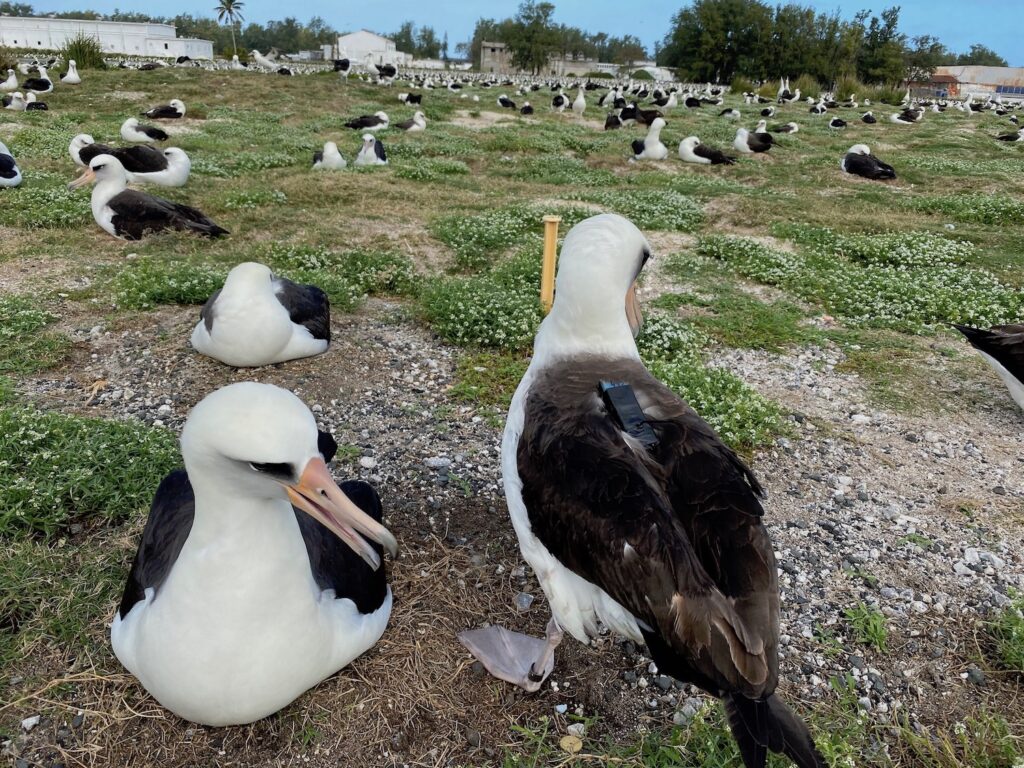By Scott Shaffer
This was the rainiest and windiest conditions we’ve experienced at Midway over the years. Despite the weather, the albatross field crew of myself (Scott Shaffer), Henri Weimerskirch, Sarah Youngren, and Dan Rapp deployed nearly 80 data logging devices on Laysan and black-footed albatrosses over two weeks during the last half of January 2022. Our primary goal was to record albatross and fishing vessel interactions using GPS loggers enabled with radar detection sensors.

Preliminary data show one Laysan albatross passing within range (but not interacting) of a fishing vessel upon its return to Midway after 10 days at sea. Stay tuned for more updates as we start analyzing the rest of the dataset. We plan to cross-reference the vessel detections with the AIS dataset amassed by Global Fishing Watch to better understand when and where albatrosses are encountering fishing vessels.

A few images from Midway in January. We were incredibly lucky to be able to get a field team out to the island!







This project is funded by the National Fish and Wildlife Foundation (PI – R.A. Orben) to support the mission of conserving natural resources of the Papahānaumokuākea Marine National Monument, Northwest Hawaiian Islands. Photos were taken under permit: PMNM-2021-012. All field personnel were vaccinated against covid-19 and underwent a period of quarantine on arrival to Midway.






